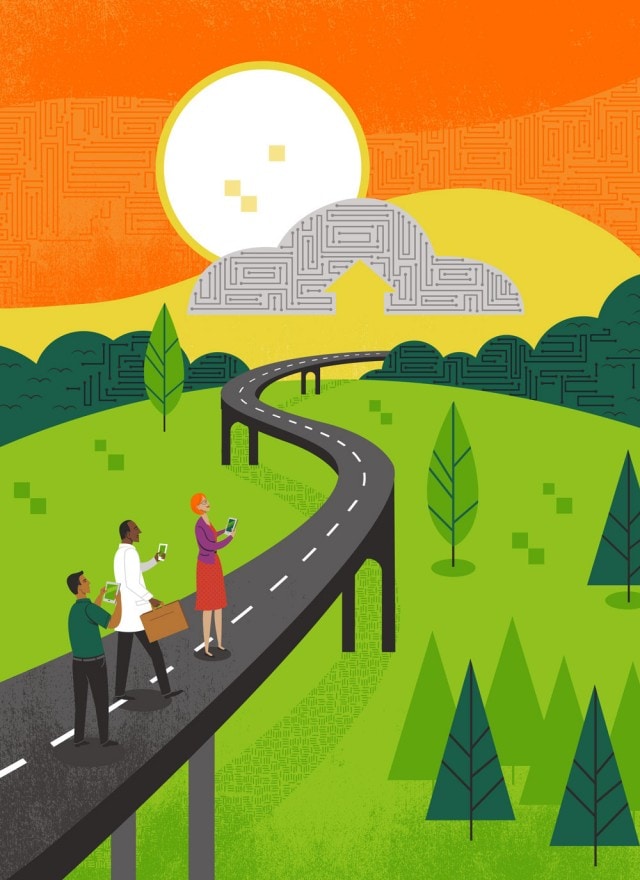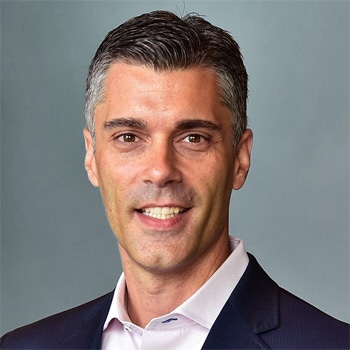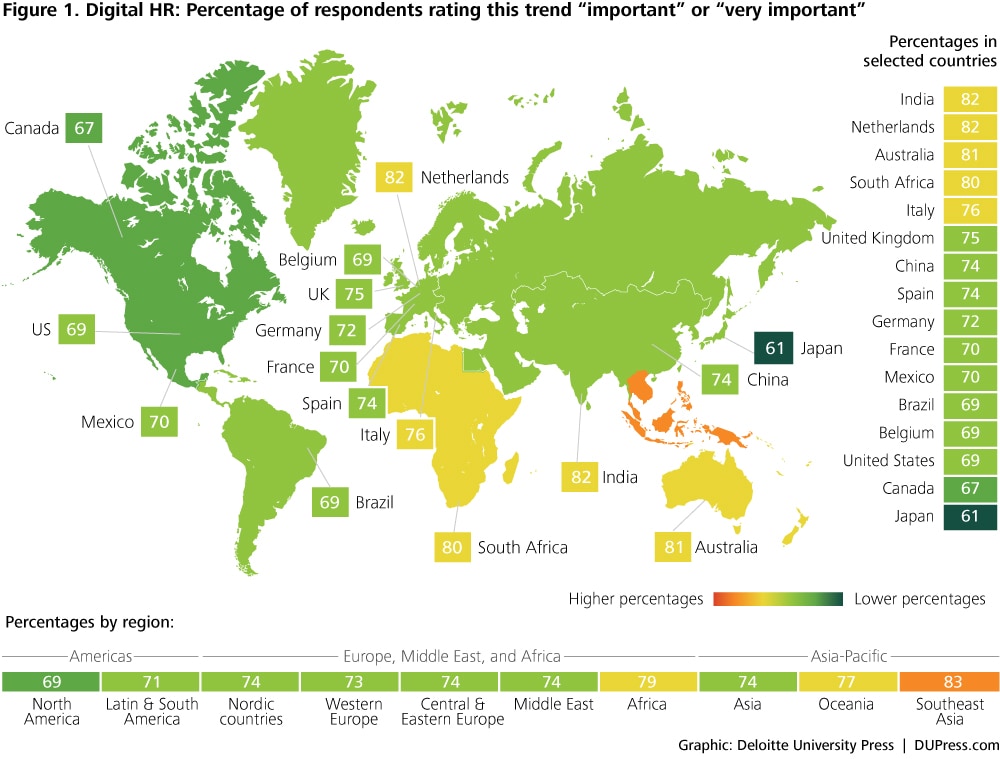Digital HR has been saved

Digital HR Revolution, not evolution
A new world for HR technology and design teams is on the horizon. Mobile and other technologies could allow HR leaders to revolutionize the employee experience through new digital platforms, apps, and ways of delivering HR services.
View the complete Global Human Capital Trends 2016 report
Explore
View 2016 Global Human Capital Trends
Create and download a custom PDF
Watch the related video
Explore the related infographic
The all-digital world is changing how we live, how we work, and how business is organized and conducted. For HR and business leaders, this digital transformation poses two fundamental challenges. First, HR can help business leaders and employees shift to a digital mind-set, a digital way of managing, organizing, and leading change. Second, HR has the opportunity to revolutionize the entire employee experience by transforming HR processes, systems, and the HR organization via new digital platforms, apps, and ways of delivering HR services. Our discussion of this trend focuses on the second part of the digital HR challenge: how to reimagine HR and the employee experience in a digital world.
- Today there are more than 7 billion mobile devices in the world,1 and more than 40 percent of all Internet traffic is driven by these devices.2 Yet HR teams remain far behind in deploying mobile solutions. Fewer than 20 percent of companies deploy their HR and employee productivity solutions on mobile apps today.3
- Designing mobile apps and considering the end-to-end user experience are new disciplines for HR, combining design thinking with apps, video, social, and mobile technologies.
- Digital HR, which brings together social, mobile, analytics, and cloud (SMAC) technologies, represents a new platform for improving the employee and candidate experience. While vendors are now delivering solutions, companies should build their own integrated digital HR strategies and programs.
 The era of true digital disruption has finally hit HR, transforming the way HR delivers solutions to employees. With the founding of Workday in 2005, the acquisition of SuccessFactors by SAP in 2011, and the purchase of Taleo by Oracle in 2012, HR remains at the forefront of the move to digital and the cloud in the workplace. The barriers between work and personal life are dissolving through the use of mobile devices. Mobile has become the channel of preference for workers, giving organizations an opportunity to drive adoption of mobile HR technologies to an extent rarely seen with traditional HR platforms.
The era of true digital disruption has finally hit HR, transforming the way HR delivers solutions to employees. With the founding of Workday in 2005, the acquisition of SuccessFactors by SAP in 2011, and the purchase of Taleo by Oracle in 2012, HR remains at the forefront of the move to digital and the cloud in the workplace. The barriers between work and personal life are dissolving through the use of mobile devices. Mobile has become the channel of preference for workers, giving organizations an opportunity to drive adoption of mobile HR technologies to an extent rarely seen with traditional HR platforms.
Imagine integrated apps that can manage time and attendance automatically; pinpoint every appointment and meeting location; deliver on-demand video learning to participants in a new project; send messages to a team when someone is running late for a meeting; monitor stress levels and recommend when it is time to take a break; and even review 401(k) plans and offer intelligent recommendations. This is the new vision for digital HR—integrating SMAC technologies to redefine the employee experience and make work easier, real-time, more productive, and more rewarding—while, we hope, improving work-life balance.
As discussed in the design thinking chapter, HR teams are now rethinking the way people work and adding digital tools to make these solutions better. The impact of design thinking may be most profoundly experienced with digital “appification.” Rather than building an onboarding system, a learning system, a performance management system, and a collaboration and coaching system, design thinking brings these solutions together in seamless apps that improve employee experiences across the board.
When these functions are moved to apps in a thoughtful way, HR can receive 10 times as many responses from employees compared to traditional systems.4 Employee productivity can improve. Data quality can rise. Unsurprisingly, leading companies across all industries are embracing this trend.
DuPont, for instance, embarked on a major project to replace, simplify, and combine all of its HR and learning systems into one integrated portal.5 Rather than offering a traditional “self-service” application, the company developed a streamlined interface that has improved productivity.
Telstra, one of Australia’s largest telecommunications companies, is using an app to transform its first-year employee experience. By using design thinking, studying the behavior and frustrations of first-year employees, and creating personas, Telstra developed an integrated onboarding program that dramatically improved employee engagement and retention.6
Despite impressive results at these and other companies, too many HR departments have yet to embrace this transformation. Today, only 7 percent of companies use mobile technology for coaching, 10 percent for performance management, 8 percent for time scheduling, 13 percent for recruiting and candidate management, and 21 percent for leave requests.7 The power of digital transformation is only beginning to emerge.
This new world of digital HR is arriving fast, but, according to this year’s survey, only 38 percent of companies are even thinking about it and only 9 percent are fully ready. Nearly three-quarters of companies, or 72 percent, believe this is an important priority and 32 percent define it as very important, so it will be a major area of opportunity for HR in 2016. (See figure 1 for our survey respondents’ ratings of digital HR’s importance across global regions and selected countries.)
Digital HR, however, is more than just building apps. It encompasses developing a new mobile platform with a wide range of apps built with cloud and analytics technology behind the scenes. This platform can be used for hundreds of apps: from time and attendance to employee wellness, to recruitment, collaboration, goal-setting, and more. The design is integrated, the user experience is location-aware, and integrated data are used to inform and make recommendations to users throughout the day.
The digital enterprise and digital HR are a revolutionary leap forward, not an incremental step.
Consider the difference between current HR service delivery models and digital HR, illustrated in figure 2, to understand how radical and profound the digital HR transformation will be.
Figure 2. Differences between current HR service delivery models and digital HR
| Current HR delivery | Digital HR |
| Transactions and processes | Integrated HR platform (policy, process, systems, operations) |
| Systems with web browser access | Mobile-first apps |
| Paper-based forms moved to web forms | Digital design |
| Process-based design | Human-centered, experience-driven design |
| SLAs (service level agreements) | Real-time (once and done) |
| HR (and shared) service centers | Operations centers |
| Periodic reports | Real-time interactive dashboards |
| Analytics add-ons | Integrated analytics platform and dashboards |
This approach represents a completely new way of thinking about HR solutions. While the replacement of legacy systems into the cloud is a major part of the transition, so is the adoption of design thinking, integrated mobile app design, and real-time HR operations. The principles of behavioral economics, the use of analytics, and constant iteration on design also underpin these efforts. To succeed in this new paradigm, HR teams will likely have to partner with IT, adopt design thinking, use integrated analytics, and analyze vendor solutions carefully. It represents a new world for HR technology and design teams, one that will open up new career opportunities and transform the impact HR has on the business.
Lessons from the front lines
Reliance Jio, the 4G telecommunications and digital services company headquartered in Mumbai and owned by Reliance Industries, began its employee launch of digital telecom services in early 2016.8 The company’s vision is to provide video-quality digital mobile Internet service to 1.2 billion customers across all 29 states and 7 union territories within India. For several years, the company’s focus was on building out the network infrastructure; in late 2014, the focus turned to starting up the business operations and recruiting and onboarding employees across the country. As one of the largest start-ups in the world, Jio’s leadership crafted a strategy suited to the business’s growth, scale, and the current state of HR technology by designing a mobile-first, cloud-first, digital-powered approach to Jio’s HR strategy and launch.
The business goals for Jio are to build a national 4G network across 18,000 cities and towns in India to serve hundreds of millions of customers; deploy the largest start-up 4G network in the world; hire and manage a workforce of 50,000; and orchestrate a national network of hundreds of thousands of retailers and distributors.
From the start, the HR strategy was based on an employee value proposition to support candidates, employees, and business managers with an experience that would be easy to use, quick, and safe. The HR program was digital-first; it allowed recruiters, candidates, employees, business managers, and HR staff to complete HR tasks and reporting by leveraging real-time apps and secure, cloud-based services using mobile devices.
Second, all HR processes, policies, and technologies (including SAP and a series of cloud apps such as Salesforce.com) were integrated into an HR platform to support the apps, reporting, and HR operations.
Third, with the goal of end-to-end digitization and real-time HR, the company is challenging itself to eliminate its shared services organization. Core activities were automated and streamlined to be conducted, reviewed, and approved in hours (in some cases, minutes) and not days. The HR platform is being run by an HR operations center tasked with clearing all inquiries and exceptions on the day they are received while working with HR centers of excellence and HR IT to continuously improve the platform.
Further, the HR platform and HR operations center have been designed and built using an agile approach that included multiple releases of both the systems and operations center. This agile approach has enabled the HR process, policy, HR IT, and business teams to learn and build capabilities in the new digital HR environment.
Where companies can start
- Challenge HR to start with a digital-first HR strategy. The digital enterprise and digital HR are a revolutionary leap forward, not an incremental step. The combination of mobile and cloud solutions and the pervasive access to smartphones as powerful as laptops and desktop computers of just a couple of years ago, are redefining how HR processes are designed, delivered, accessed, and operated. The shift to a mobile and platform way of thinking is at the forefront of this challenge.
- Embrace design thinking. Social, mobile, analytics, and cloud tools are only useful if employees adopt them. HR must begin with employee needs and the user experience. Incorporating design thinking throughout the process will help companies maximize the impact of new digital technologies.
- Leverage an agile approach integrating HR, technology, employees, and business leaders in the process. HR has the opportunity to use agile development—rapid development by integrated teams delivering prototypes and solutions in successive releases and waves—as a new way of operating in HR and supporting similar programs across the company. Unlike the traditional waterfall development process, agile development requires HR specialists, system and app developers, designers, employees, and business leaders to work together as a team.
- Share digital strategies and experiences across the company: HR has the opportunity to learn from early digital adopters in the company, generally customer marketing and operations. A community of practice can share digital experiences and implementation learning across the company. HR can learn from the digital savvy across the company and, in turn, help develop the enterprise’s digital mind-set and capabilities.
- Imagine HR and the employee experience in real time: One of the biggest changes in moving to a digital HR strategy is the focus on real-time access, decision-making, and results. This involves a significant step beyond many recent HR efforts, which have focused on shared services and HR service centers and SLAs (service level agreements). Digital HR is also a call to automate many areas of HR. With every employee having a smartphone, HR teams can automate, streamline, and adopt more real-time and digital-first operations rather than process forms and transactions.
- Integrate analytics and reporting as part of the digital platform, not an add-on: Most HR teams today have dedicated teams that collect information from process and transaction systems for basic HR reports and analysis. Instead, HR management information should be an automated part of the HR digital platform. It should provide managers with real-time information and leaders with real-time analysis, decreasing the time spent on reports and increasing the time HR and business leaders spend on analyzing data and solving problems. Analytics and reports can be configured and integrated into a business intelligence layer of the HR platform, linking apps directly to leadership reports and analysis.
Bottom line
HR’s digital transformation begins with a change of mind-set within the HR organization, prioritizing connectivity, real-time operations, platforms, automation, and mobile-first. For many organizations, both in HR and across the enterprise, this is a revolutionary opportunity. The digital HR journey focusing on the employee and HR experience is one part of the larger digital HR challenge: to answer the question, “How can HR play a role in developing the overall digital enterprise strategy, organization, and culture?”
Deloitte’s Human Capital professionals leverage research, analytics, and industry insights to help design and execute the HR, talent, leadership, organization, and change programs that enable business performance through people performance. Visit the “Human Capital” area of www.deloitte.com to learn more.
© 2021. See Terms of Use for more information.







